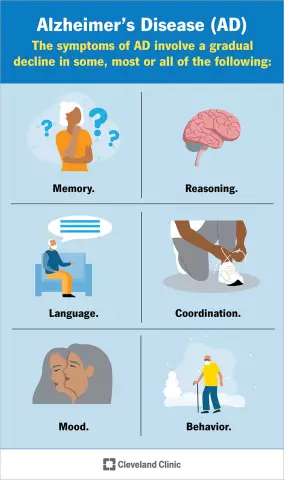- Author Rachel Wainwright [email protected].
- Public 2023-12-15 07:39.
- Last modified 2025-11-02 20:14.
Neuroblastoma
Brief description of the disease

Neuroblastoma is one of the most common malignant tumors that occur in childhood. This tumor ranks fourth in the number of neoplasms in children after leukemia, CNS tumors, malignant lymphomas and sarcomas. The tumor is detected at a fairly early childhood age, most often from 1 to 3 years. Neuroblastoma in children can be localized in any part of the body, but localization behind the peritoneum and in the posterior mediastinum is of practical importance.
The causes of the disease are not fully understood. The only reliable factor is heredity.
Forms of neuroblastomas
There are 4 forms of neuroblastoma in children, depending on the type of cells and localization.
Melulloblastoma - the tumor is localized quite deep in the cerebellum, which makes it impossible to remove it with surgery. It is characterized by the rapid onset of metastases, which leads to the rapid death of the child. The very first symptoms of tumor development are manifested in impaired coordination of movement and balance.
Retinoblastoma is a malignant tumor that affects the retina of the eye in children. The development of retinoblastoma leads to blindness and brain metastases.
Neurofibrosarcoma is a tumor of the sympathetic nervous system. It is localized in the abdominal region, gives metastases to the bones and lymph nodes.
Sympathoblastoma is a malignant tumor that is localized in the sympathetic nervous system and adrenal glands. Formed in the fetus during the formation of the nervous system. Sympathoblastoma can also be localized in the chest cavity. Increased adrenal tumors can damage the spinal cord, leading to paralysis of the limbs.
Stages of neuroblastoma
There are 4 stages of development of neuroblastoma in children:
Stage I - characterized by the localization of neuroblastoma at the site of the primary focus;
Stage II - the tumor goes beyond the primary focus, but does not have localization on the other side of the spine;
Stage III - the tumor spreads to both sides of the spine with damage to the lymph nodes;
Stage IV - neuroblastoma gives distant metastases to soft tissues, skeletal bones, lymph nodes, etc.
Symptoms of neuroblastoma
The first signs of the development of neuroblastoma in children are pallor of the skin, a decrease in apatite, vomiting, unreasonable whims, constipation. Perhaps the appearance of low-grade fever, increased heart rate, increased sweating, hair loss. As the tumor develops and grows, the symptomatology increases. You may need a pulse oximeter to measure your heart rate.
With retroperitoneal neuroblastoma, an increase in the circumference of the abdomen is observed; on palpation, a sedentary and lumpy tumor is palpated. The costal arch may be twisted or a bulging in the lumbar region from the side of tumor formation can be seen. It is not uncommon to notice the vascular network in the upper abdomen and chest. Retroperitoneal neuroblastoma is characterized by very early changes in the blood test, namely, a decrease in hemoglobin levels.
Neuroblastoma in the mediastinal region at the initial pores is asymptomatic. With the progression of the tumor, its invasion into the spinal canal is noted, which leads to paralysis of the upper and lower extremities, as well as urinary and stool incontinence.
Often, parents notice signs of the disease, which are not caused by a tumor, but by metastases. This is due to the fact that the tumor metastases quite early. Symptoms depend on the location of the metastases. When the bones of the skull are affected, tumor tubercles can be seen on the scalp, as well as protrusion of the eyes and hemorrhages. With metastases in the liver region, its increase and tuberosity are observed. Bone damage is characterized by pathological fractures.
Diagnosis of neuroblastoma
To diagnose a tumor, the child is examined with palpation of the abdomen, thanks to which the tumor can be identified. Also, blood and urine tests are prescribed, ultrasound and X-ray examination, computer and magnetic resonance therapy are performed. The final diagnosis is made on the basis of a biopsy of the tumor and its histological examination.
Neuroblastoma treatment
The treatment of neuroblastoma includes three main areas: the use of chemotherapy, radiation therapy, and surgery.

Usually, complex treatment of neuroblastoma is carried out using several methods. The first and second stages of neuroblastoma are successfully treated with surgery. Although the removal of retroperitoneal neuroblastoma is not always possible due to the growth of the tumor into adjacent tissues and connection with the main vessels. Sometimes partial removal of the tumor is possible. Radiation therapy has a good effect.
With proper treatment, the likelihood of recovery in children with stage I and II neuroblastoma is quite high. The fourth stage has a poor prognosis of the disease, the five-year survival rate even with the most modern treatment programs does not exceed 20%.
YouTube video related to the article:
The information is generalized and provided for informational purposes only. At the first sign of illness, see your doctor. Self-medication is hazardous to health!






